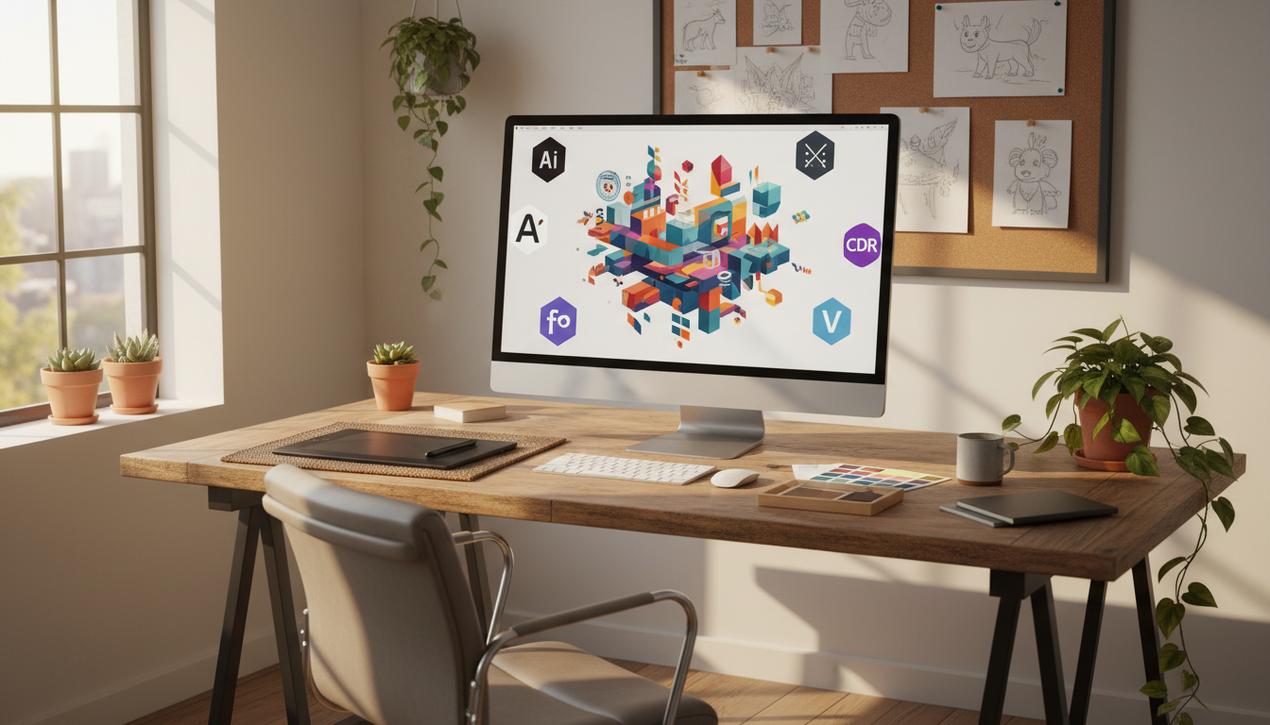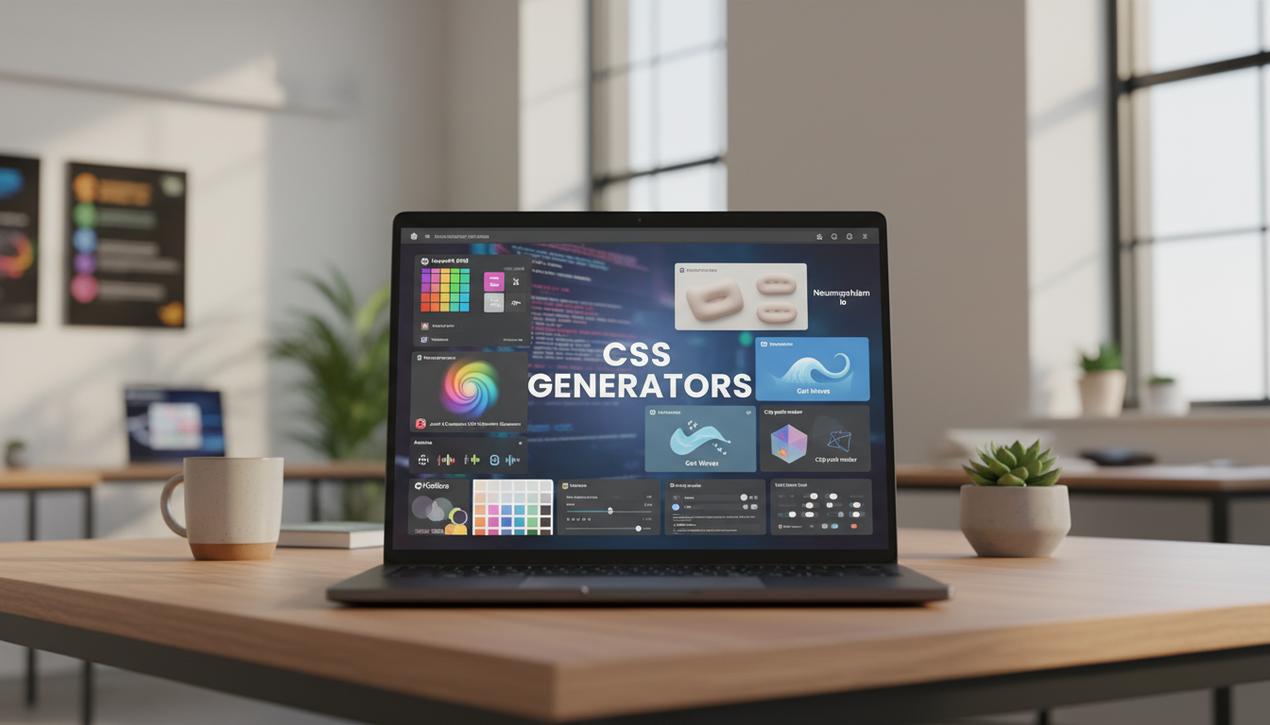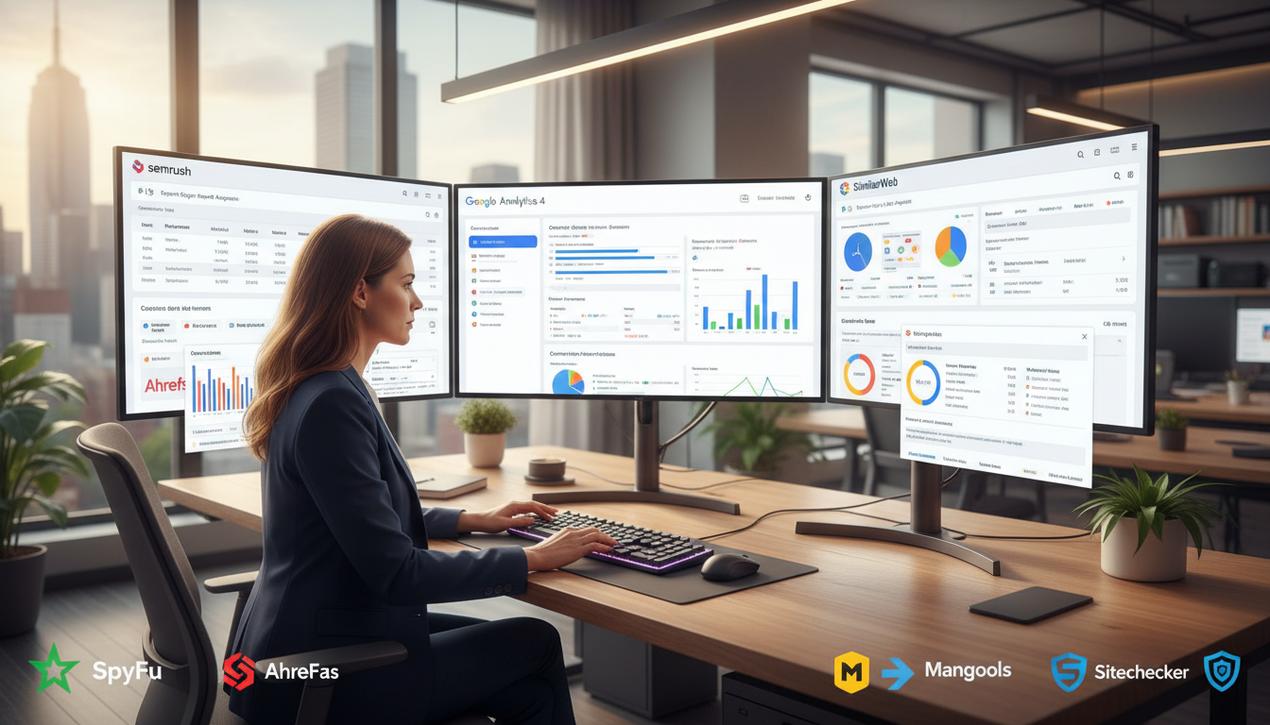The 7 Best Vector Design Software in 2025


In today’s digital-first branding landscape, visual quality is non-negotiable. The global graphic design software market is already a multi-billion dollar industry and is projected to grow by nearly 8% annually. At the core of this creative revolution lies vector design software, an essential technology for any modern graphic designer, illustrator, or UI/UX specialist, aligning with the major marketing trends of 2025. Unlike raster images (made of pixels), which blur when enlarged, vector graphics are built on mathematical equations. This allows them to be scaled to any size—from a tiny app icon to a massive billboard—with zero loss of quality. This scalability guarantees a crisp, professional brand image across all media. However, with a crowded market ranging from industry-standard subscriptions to powerful open-source alternatives, choosing the right tool can be daunting. In 2025, features supercharged by artificial intelligence and seamless real-time collaboration are redefining the landscape. This comprehensive guide breaks down the 7 best vector design software options, analyzing their strengths, weaknesses, and ideal users to help you find the perfect match for your creative projects.
Why Vector Graphics Are Essential for Modern Design
Before comparing the tools, it’s crucial to understand why the vector format is so fundamental. Its superiority lies not just in scalability but also in its flexibility, precision, and efficiency, which are critical for building a coherent and professional brand identity.
1. Infinite Scalability for Flawless Quality
The most celebrated feature of vector graphics is their infinite scalability. A logo, icon, or illustration created in a vector format can be enlarged for a 4K display or shrunk for a website favicon without any degradation. This ensures your brand visuals remain sharp and consistent everywhere, from print to digital.
2. Smaller File Sizes for Better Performance
Vector files store mathematical data (paths, points, and curves) instead of a pixel grid. As a result, they are typically much lighter than their raster counterparts (like JPEGs and PNGs) of similar visual complexity. This is a significant advantage for web performance, as lighter assets lead to faster page load times and a better user experience.
3. Effortless Editing and Modification
Every element in a vector graphic is an independent object. You can easily change its color, shape, outline, or position at any time without affecting the rest of the artwork. This non-destructive workflow offers unparalleled creative freedom, including using flawless font combinations, and makes revisions quick and precise, streamlining the entire design process.
How to Choose the Right Vector Software for You
The “best” software is subjective; it depends entirely on your specific needs, budget, and skill level. Here are the key criteria to consider before making your decision.
- Budget: Pricing models vary widely. Do you prefer a recurring monthly subscription (Adobe Creative Cloud), a one-time payment (Affinity Designer), or a completely free solution (Inkscape)?
- Learning Curve: Some programs, like Illustrator, are incredibly powerful but can be intimidating for beginners. Others, like Vectr or Canva’s vector tools, prioritize simplicity for a faster learning experience.
- Features: Do you need advanced print features (CMYK color profiles), real-time collaboration tools (Figma), deep integration with other creative software, or advanced AI-powered tools?
- Platform Compatibility: Ensure the software runs on your operating system (Windows, macOS, Linux) and can import and export the file formats you need (AI, EPS, SVG, PDF).
Our Selection of the 7 Best Vector Software of 2025
We’ve analyzed the market to bring you a complete selection that includes the industry titans, powerful challengers, and the best free options available today.
1. Adobe Illustrator
The undisputed industry standard. For decades, Illustrator has been the benchmark against which all other vector software is measured. It offers the most comprehensive and powerful toolset on the market for creating logos, icons, and complex illustrations. Its seamless integration with the Adobe Creative Cloud ecosystem (Photoshop, InDesign, After Effects) makes it an indispensable tool for most professional designers. In 2025, its AI-driven features like Generative Recolor and Text to Vector Graphic continue to push creative boundaries.
- Best for: Professional graphic designers, illustrators, and agencies who need the most complete, integrated solution.
- Pricing Model: Adobe Creative Cloud subscription.
2. Affinity Designer
The most powerful challenger. Affinity Designer has firmly established itself as the leading alternative to Illustrator. It delivers exceptional speed and power, with unique features like the ability to switch seamlessly between vector and raster workspaces. It handles Adobe files (AI, PSD) with ease and boasts advanced tools like a one-million-percent zoom. However, its most compelling feature is its pricing model: a single, affordable one-time payment.
- Best for: Freelancers and professionals seeking a powerful, subscription-free alternative to Illustrator.
- Pricing Model: One-time purchase (around $70 for the desktop version).
3. Figma
The king of collaboration and UI/UX. While best known as a UI/UX design tool, Figma is built on a powerful web-based vector engine. Its greatest strength lies in its real-time collaboration features, which allow entire teams to work on the same file simultaneously. Its generous free tier has made it the go-to tool for startups, web designers, and product teams worldwide, who often present their work using the best mockup generators.
- Best for: UI/UX design, website and app prototyping, and collaborative team projects.
- Pricing Model: Freemium (a robust free plan with paid tiers for advanced team features).
4. Inkscape
The power of open-source. Inkscape is the most mature and feature-rich free and open-source vector editor available. Compatible with Windows, macOS, and Linux, it offers a vast array of drawing and object manipulation tools that can rival premium software. While its interface may feel less polished than its paid counterparts, its active community and extensive library of extensions make it an incredibly flexible tool for creating logos, diagrams, and detailed illustrations.
- Best for: Beginners, students, and professionals looking for a powerful and completely free solution.
- Pricing Model: Completely free (Open-Source).
5. CorelDRAW
The time-tested professional suite. A long-standing competitor to Illustrator, the CorelDRAW Graphics Suite remains a robust solution, especially popular in industries like sign making, large-format printing, and technical illustration. The suite is incredibly comprehensive, bundling tools for page layout and photo editing. Its bitmap-to-vector tracing feature, PowerTRACE, is widely regarded as one of the best in the business.
- Best for: Professionals in print, manufacturing, engraving, and technical design.
- Pricing Model: Subscription or a one-time perpetual license purchase.
6. Sketch
The UI design pioneer for Mac. Available exclusively on macOS, Sketch pioneered the modern UI design workflow before the rise of Figma. It remains a lightning-fast, lightweight, and intuitive vector-based tool. Its massive ecosystem of third-party plugins allows users to extend its functionality infinitely. It is highly valued for its simplicity and efficiency in an Apple-centric design environment.
- Best for: UI/UX designers working exclusively within the macOS ecosystem.
- Pricing Model: Annual subscription.
7. Vectr
Simplicity and accessibility first. Vectr is a free, web-based vector graphics editor designed to be incredibly simple and easy to learn. It lacks the depth of the other tools on this list, but that is its core strength. It’s perfect for quick tasks like creating simple logos, social media graphics, or basic mockups. Its real-time sharing and syncing features also make it useful for light collaboration.
- Best for: Absolute beginners, marketers, or anyone needing to create simple vector graphics quickly.
- Pricing Model: Free.
The Future of Vector Design: Trends to Watch
The vector design industry is undergoing a significant transformation, driven by technological innovations that automate tedious tasks and unlock new creative possibilities.
Generative AI takes center stage
The most impactful trend is the integration of AI. Tools like Adobe Firefly can now generate vector illustrations from simple text prompts (“text-to-vector”). AI is also simplifying workflows by recoloring entire scenes in a few clicks and cleaning up complex paths automatically, dramatically speeding up the creative process.
The line between 2D and 3D is blurring
The boundaries between two and three-dimensional design are disappearing. More vector software is incorporating tools to extrude 2D shapes into 3D objects, apply textures, and manage lighting. This trend enables the creation of icons, logos, and illustrations with greater depth and realism, all within a single application.
Choosing your vector design software is an investment in your creativity and professional workflow. Whether you’re a seasoned pro who needs the full power of Illustrator, a pragmatic freelancer drawn to Affinity Designer’s value proposition, or a beginner looking for the free and powerful Inkscape, there is a solution tailored to your needs. The key is to assess your requirements, test free trials, and select the tool that removes friction from your process. The right software is the one that empowers you to bring your ideas to life seamlessly, letting you focus on what truly matters: your creativity.




